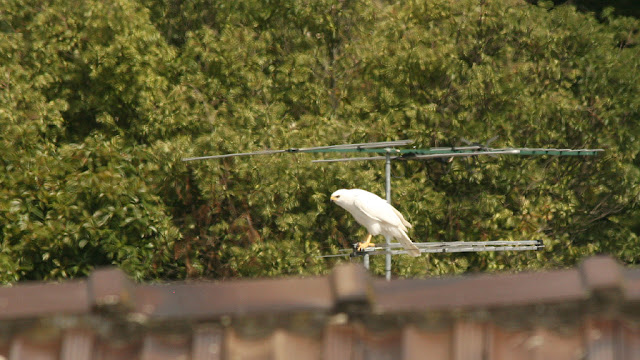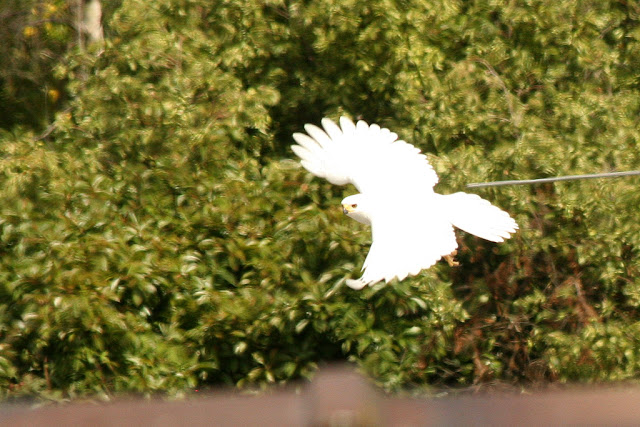[edit] For much better photos of the White Goshawk see this post: White Goshawk - Second EncounterFirst of all, I would like to apologize to readers for not having time to post as regularly as I would like to. And I haven't had time to visit any fellow bloggers' sites recently either. I will try to catch up over the next few days.
Below are two pretty bad images of an awesome bird - the Grey Goshawk (White morph), also known as White Goshawk.
What's the story?
I had my camera's battery in the charger and was doing some house work when I had a look through the window and spotted something white quite far away. "Hm! What a funny looking Cockatoo." I thought. But the thought lasted only a millisecond. I quickly remembered a friend telling me about the white bird of prey he'd seen half a year ago. This made me shaking, but still I was quick enough: grabbed the camera, loaded the battery, and took five shots in one second through the dirty window. That was it. The bird was gone.


Grey Goshawk, White morph, Tasmania
click on a photo to view hi-res image :: click on a label to open all related posts
There is some inconsistency in the information about the color. Some sources call it phase, as if it is altering between the grey and white in the same individual, but others talk about morph (or form) which means that some individuals are white and others are grey. And I even found one stating that all Grey Goshawks on Tasmania are white. (This sounds funny. As my dad would say here: All the blue plums are red, 'cause they are still green.)
I consider it to be a morph rather than a phase.
Here is what Wikipedia says about it:
The Grey Goshawk, Accipiter novaehollandiae, the white morph of which is known as the White Goshawk, is a strongly built, medium-sized bird of prey in the family Accipitridae.
The grey morph has a pale grey head and back, dark wingtips, barred grey breast and tail, and white underparts. The white morph is the only bird of prey in the world to be entirely white.[2]
Grey Goshawks are about 40–55 cm long, with wingspans of 70–110 cm. Females are much larger than males, weighing about 680 g. Males average 350 g.
This is the
link to the whole article.